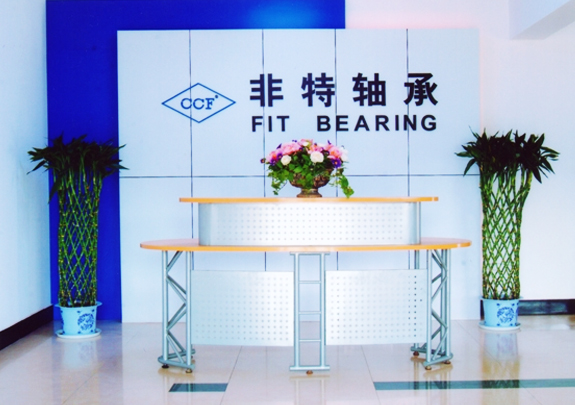Motorcycle Bearings
VIEW DETAILS
VIEW DETAILS

Zhejiang Fit Bearing Co., Ltd. was established in November 2003 with a registered capital of USD 2 million. The plant covers an area of 35,000 square meters and 20,000 square meters, with more than 120 workers and more than 20 technical management personnel.
At the beginning of its establishment, the company specialized in producing all kinds of low-noise long-life ball bearings. As a professional China Motorcycle bearings Manufacturers and Motorcycle bearings Suppliers, After years of development in the bearing industry, we have accumulated rich experience in production and management. In 2013, we began to vigorously develop agricultural machinery parts and construction machinery parts. At present, we have formed a team with exquisite technology and excellent management, capable of R&D, manufacturing, sales and service in the bearing industry and agricultural machinery parts. After years of hard work and development, we have formed a capable R&D and manufacturing team. They have rich knowledge and experience in materials, heat treatment, machining and grinding. There are currently 9 professional R&D engineers responsible for the development of new products.
The main shaft bearing is the most important component in the engine. If the main shaft bearing fails, it will directly cause the engine to stop running. In order to improve the reliability of the eng...
Read MoreBearing failure is a common problem during the operation of bearings, and the form of wear is a type of bearing failure. Wear can also cause significant damage to bearings, and repairing a few pieces ...
Read MoreThe working temperature of cylindrical roller bearings depends on various factors, including the heat output of all relevant heat sources, the heat flow rate between heat sources, and the heat dissipa...
Read MoreHow do motorcycle bearings contribute to the overall performance of the bike?
Motorcycle bearings play a crucial role in the overall performance of a bike, impacting various aspects of its functionality and safety.
Reduced Friction:
Bearings, such as wheel bearings, headstock bearings, and swingarm bearings, are designed to minimize friction between moving parts. Reduced friction contributes to smoother operation, improved fuel efficiency, and enhanced overall performance.
Handling and Stability:
Steering head bearings, also known as headstock bearings, are essential for the bike's handling and stability. They allow the front fork and handlebars to rotate smoothly, influencing the bike's responsiveness to rider input and overall stability during maneuvers.
Smooth Wheel Rotation:
Wheel bearings, found in both the front and rear wheels, facilitate smooth rotation of the wheels. This not only contributes to a comfortable ride but also ensures efficient power transmission and braking performance.
Load Support:
Bearings in various parts of the motorcycle, such as wheel bearings and swingarm bearings, provide crucial support for the loads experienced during acceleration, braking, and cornering. Proper load support contributes to the bike's overall structural integrity and safety.
Vibration Damping:
Bearings play a role in absorbing and dampening vibrations generated during motorcycle operation. This helps improve rider comfort and reduces the transmission of vibrations to critical components.
Durability and Longevity:
High-quality bearings contribute to the durability and longevity of the motorcycle. Bearings are subjected to various stresses, including dynamic loads and environmental conditions, and well-designed, durable bearings can withstand these factors, reducing the frequency of maintenance and replacement.
Alignment and Misalignment Compensation:
Bearings, particularly in the suspension system and swingarm, contribute to maintaining proper wheel alignment. They also help compensate for slight misalignments and ensure that the wheels remain in the correct position, contributing to safe and predictable handling.
What are the steps involved in installing or replacing motorcycle bearings?
Installing or replacing motorcycle bearings involves several steps, and it's essential to follow proper procedures to ensure the bearings function correctly and contribute to the overall safety and performance of the motorcycle.
Obtain the service manual for your specific motorcycle model. It contains detailed instructions and specifications.Ensure you have the required tools, including bearing pullers, installation tools, and appropriate lubricants. Use quality tools to prevent damage during the process.Lift the motorcycle using a suitable stand or lift to ensure stability and easy access to the components.
Identify the component containing the bearings (e.g., wheel hub, swingarm). Remove any necessary parts, such as the wheel, to access the bearings.Use a bearing puller to carefully remove the old bearings. Take note of their orientation and placement.Thoroughly clean the bearing housing to remove dirt, debris, and old lubricant. A solvent or degreaser may be used.Inspect the housing for signs of damage, wear, or misalignment. Address any issues before proceeding.
Inspect the new bearings for damage and ensure they match the specifications outlined in the service manual.Apply the recommended lubricant to the bearing surfaces. Ensure even coverage without excess grease.Use an appropriate installation tool to press the new bearings into place. Ensure they are seated evenly and fully in the housing.Confirm that the bearings are installed in the correct orientation as per the service manual.
Put back any removed parts, such as the wheel, and reassemble the component according to the service manual.Tighten all fasteners, such as axle nuts, to the specified torque values outlined in the service manual.Rotate the component to check for smooth and unobstructed movement. Ensure there is no binding or unusual resistance.If applicable, adjust and align the component according to the service manual to ensure proper function.Take the motorcycle for a test ride to ensure everything is functioning correctly. Conduct a final inspection for any issues.Keep a record of the maintenance, including the date, type of bearings used, and any other relevant information.